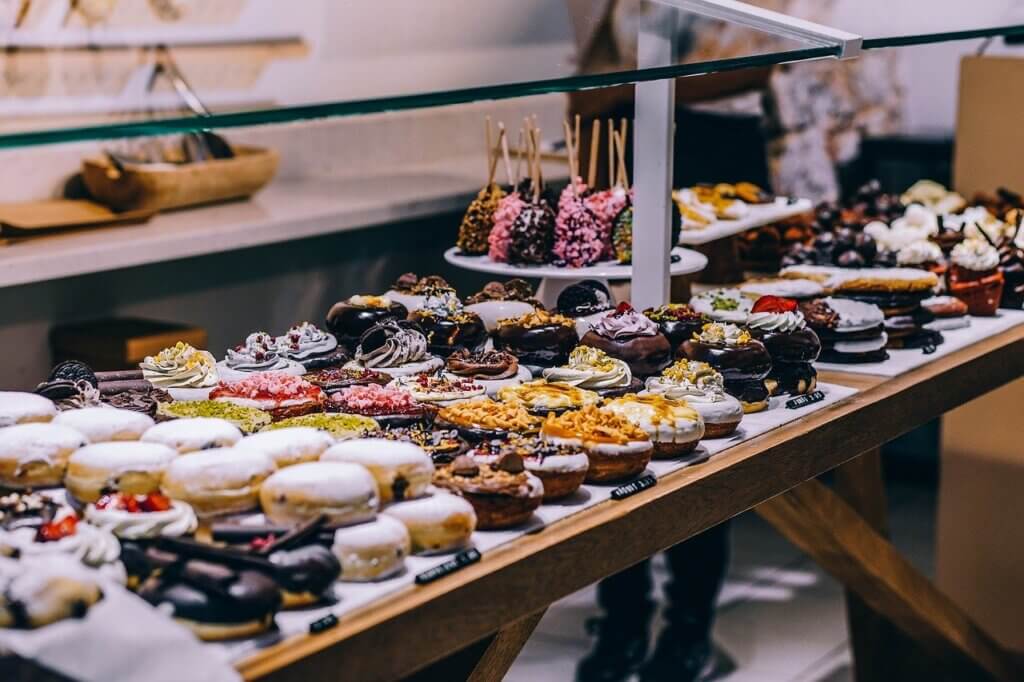You probably already know that boulangerie and pâtisserie are the cornerstones of French baking. But what exactly are they, what do they offer, and how do they delight your senses?
The meaning of boulangerie is French for bakery, while pâtisserie’s meaning is twofold. It refers to the shop selling French pastries and cakes, as well as to the pastries themselves. There are even boulangerie-pâtisserie shops where you can enjoy all sorts of pastries and bread all in one place!
Ready to find out more? Let’s go! And if you want to master your French, we’ve got a whole list of French language resources available for you to check out for free!
Welcome to the boulangerie
Pronouncing boulangerie is easy if you split it into three syllables: bou [bu] + lange [lɑ̃ʒ] + rie [ʁi]. So, the next time you walk into one, you can say [bu.lɑ̃ʒ.ʁi] with confidence. And while you’re here, check out our Learn French page for great tips and resources to help you master that perfect accent.
Want to know a curious fact? In France, bakeries must make their own bread on-site to merit the name “boulangerie.” While they may also sell pastries, the main food item found here is traditional French bread, or pain [pɛ̃], of which the baguette [ba.ɡɛt] is easily the most popular variety.
Discover some other items you can buy in a boulangerie, and their meaning:
- Pain suisse [pɛ̃.sɥis] — a folded pastry filled with vanilla cream and chocolate chips.
- Macaron [ma.ka.ʁɔ̃] — a small sandwich cookie filled with buttercream or jam.
A boulangerie requires a boulanger [bu.lɑ̃.ʒe], meaning baker, to operate. This skilled food craftsman knows the myriad processes involved in baking with dough to create delicious French loaves of different shapes and sizes.
Here are a couple more terms deriving from the French word for bakery:
- Boulange [bu.lɑ̃ʒ] — the craft of baking.
- Boulangère [bu.lɑ̃.ʒɛʁ] — a female baker, which originally meant a baker’s wife.
Next stop, the pâtisserie
Now that we know the answer to What is a pâtisserie?, we’re ready to pronounce this French word for pastry shop: pâ [pɑ] + ti [ti] + sserie [sʁi]. The plural pâtisseries sounds identical to the singular form [pɑ.ti.sʁi]. Easy, right?
This staple of French culinary craftsmanship must employ a licensed maître pâtissier [mɛtʁ pɑ.ti.sje] (master pastry chef) at its premises. Many pastries are so complex that only a well-trained hand can create them to perfection.
These are some delicious treats you’ll find in a pâtisserie, and their definition:
- Mille-feuille [mil.fœj] — a three-layer dessert made with cream and puff pastry, normally topped with white icing and chocolate in a swirl pattern.
- Petits fours [pə.ti fuʁ] — a soft cake layered with raspberry jam and buttercream.
- Bavarois [ba.va.ʁwa] — a sweet, thick custard dessert.

Image by Pexels from Pixabay
What about viennoiserie?
We’ve established the meanings of pâtisserie and boulangerie, but what is viennoiserie? Pronounced [vjɛ.nwaz.ʁi], the term refers to baked goods made in a similar way to bread and pastries but with added ingredients. Sucre [sykʁ] (sugar) and beurre [bœʁ] (butter) create richer, flakier pastries that are closer to the croissant [kʁwa.sɑ̃].
Our top picks from the mouth-watering viennoiserie selection are:
- Brioche [bʁijɔʃ] — a light and fluffy type of bread.
- Financier [fi.nɑ̃.sje] — an almond cake shaped like a gold bar.
Ready for a taste test?
Congratulations! Now that you’ve learned the French word for pastry, the French word for bakery, and what sets them apart, are you ready to find out what gets your taste buds going? We know we are!
If you’re serious about learning French, download the Fluent Forever app to get started. You can also boost your progress with a personal French language coach.





